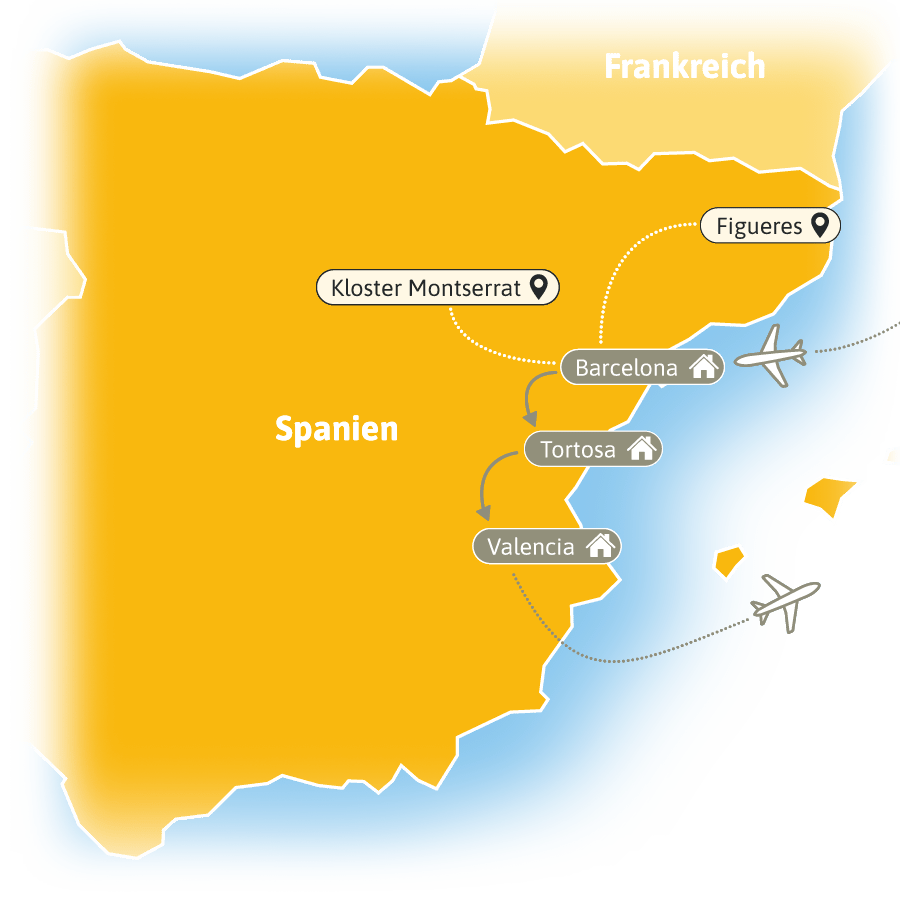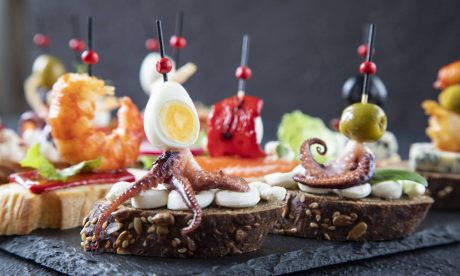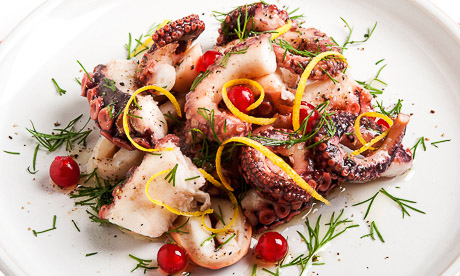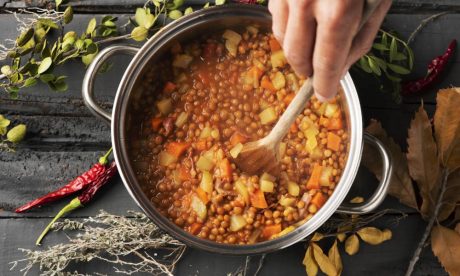Individual tours
Spain's east coast 2025
“The east coast of Spain fascinates me with its contrasts. There is Barcelona with Dalí, Gaudí, Miró, Picasso and the impressive Sagrada Familia as an artistically unique avant-garde and modern city. On the other hand, there is the great history with Columbus, the historic Tortosa and the monastery of Montserrat, which was founded in 1025 and still has a touch of the time-honoured within its walls. Montserrat has another fascinating side for me: the nature park of the same name in which it is nestled. I love hiking through this wild, almost untamed landscape. I find the natural park at Cap de Creus in the easternmost tip of Spain similarly impressive, with its unique beauty characterised by the sea.”
Of course, your trip to the east coast of Spain can also start right on your doorstep. When travelling with your own car, we also plan and organise the route and accommodation for your individual trip through the transit countries according to your wishes.
How to start your Tour of Spain's east coast


Our recommendation for you

- 8 days - 3 places
- Barcelona (3 nights)
- Tortosa (1 night)
- Valencia (3 nights)
- Further highlights
- Montserrat Monastery
- Figueres
- Tarragona
- Xàtiva

More car hire tours on the east coast of Spain
Discover the east coast of Spain
Cultural Catalonia and Valencia
The vibrant colours of the landscapes on the east coast of Spain have always captivated numerous artists and inspired them to create great works. You can experience this, for example, in the “City of Arts and Sciences” in Valencia or in Park Güell in Barcelona, when you sit down on the bench that Antoni Gaudí himself created. Or find out what Pablo Picasso meant when he said “Everything I know, I learnt in Horta” in the Els Ports Nature Park. In general, the east coast of Spain is home to the really big names in museums, exhibitions and buildings. Lovers of Art Nouveau, avant-garde and modernism will get their money’s worth here!
The Catalans are an exuberant people who love to party and dance – especially Flamenco and Sardana. From the big cities to the smallest villages, you will encounter a wide variety of festivals and customs on your journey along the east coast of Spain. The Human Towers of Castells or the Festival of La Patum de Berga, which takes place in early summer, have even made it onto the list of immaterial UNESCO World Heritage Sites. But the many large and small festivals centred around music and dance are also an experience where you can get to know the culture and the people.




Experience nature on the east coast of Spain
You will not only find the tranquil, dreamy side of the Costa Brava in the many hidden coves, where you can gaze out over the glittering sea beneath pine groves, but also in the small fishing villages where time seems to stand still. In places like Figueres or Cadaqués, you can literally imagine how Salvador Dalí was once inspired by the atmosphere and landscape to create his greatest works. Things get spectacular at Cap de Creus, the easternmost point of the Iberian Peninsula, which is perfect for hours of coastal walks.
Barcelona’s hinterland, on the other hand, welcomes you with a completely different scenic highlight of your journey through eastern Spain. The rocky massif Montaña de Montserrat offers a unique sight with its jagged shape and is not only home to a rich variety of fauna, but also the most famous monastery in Catalonia with the monastery of Montserrat of the same name.
Nature lovers can go on a voyage of discovery through the world of numerous bird species in the wetlands of the Ebro Delta. You are even likely to see flamingos in the wild here.




Culinary delights in Catalonia and Valencia
The cuisine of Catalonia and Valencia is characterised by the two landscape features of the regions – the sea and the mountains. You will therefore find fresh seafood on the plates as well as produce from small farms in the interior, including goat’s cheese and chicken. Valencia is also the home of paella, probably the most famous dish on the Iberian Peninsula, which combines fish and meat.
In general, the east coast of Spain is known for the high quality of its produce. Even simple home cooking such as the bullit stew, which consists of potatoes, beans and vegetables, is a pure flavour experience thanks to the fresh, regional ingredients alone. Another Catalan speciality that is as simple as it is delicious is the Pa amb Tomàquet, a toasted bread to which fully ripe tomatoes, olive oil and salt are grated. Whether with a glass of wine in the afternoon or as a starter, the bread can be found on almost all menus.




Special experiences on the east coast of Spain
You can’t visit the east coast of Spain without stopping by its most famous building, the Sagrada Familia. The building, designed by Gaudí, is still unfinished and impresses not only with its size, but above all with the many details of its façade and interior. Here, architecture, painting, glass and stonemasonry merge into a breathtaking work of art. Much older and no less impressive is the monastery complex of Montserrat with the Holy Grotto not far from the monastery – a paradise for history lovers, art fans and bibliophiles who can spend hours in the museum and nearby library.
Do you want culinary delights to play a special role on your round trip through eastern Spain? Then a visit to a sparkling wine cellar in Catalonia or a picturesque winery in the Valencia region will delight you. Or visit the Albufera region, the largest rice-growing area in Spain. Where else, if not here, can you learn all about the traditional preparation of paella or arroz al horno? In the Albufera Nature Park of the same name, you can discover over 100 native bird species by boat.




You are travelling individually but in the best company





